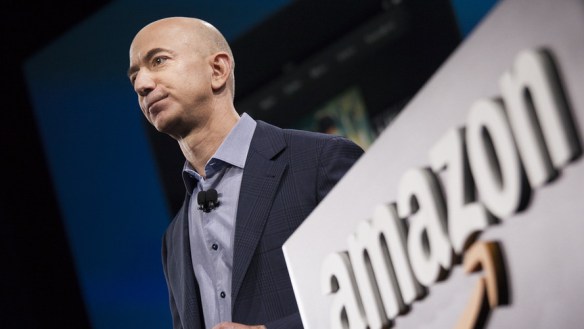Amazon – An Example of Supply Chain Excellence
What Lessons Can We Learn from Amazon’s Revolutionary Supply Chain Management?
The growth of Amazon into a Behemoth company has its roots firmly in developing the most robust and reliable Supply Chain proposition ever seen in the retail sector. They even charge their customers an annual subscription to deliver. So what can other industries learn from this?
Clients’ opinions of Amazon are far reaching, but one very concise comment resonates:
“I trust Amazon to deliver on time, every time. I am sure there are cheaper products out there somewhere, but I use Amazon on average 240 times a year because I trust them. Any problems are sorted in a minute. Simple searches and simple payments. In today’s world a company that does what is says on the tin is far better to me than one you cannot trust or don’t know. Sometimes they don’t deliver on time and that is actually OK as I can simply see it on my order anyway.”
Another one that resonated was this comment: “Amazon has done to the retail industry what LinkedIn has tried to do for the Recruitment Industry. Amazon revolutionised online shopping, gained market through robust deliverables that people can TRUST, on time and every time”.
So, what can other industries learn from Amazon and how can that transfer to, for example, the Drinks sector?
Certainty of Delivery
There is nothing more frustrating than waiting for an order, not knowing where it is or whether it will arrive. Trust is built around certainty and, while Amazon is by no means perfect, their deliveries are usually on time, giving a level of trust and comfort to their customer.
Amazon has nailed this with something very simple – an “Out for Delivery” message which you can invariably trust. Having a simple portal for orders where a client can log-in to see that their delivery is due today saves a lot of time and ultimately money. They have staffed a competent customer service centre to handle such enquiries.
General industrial delivery standards are often shocking but tend to be accepted, almost universally. A friend of mine runs several Gyms and told me that ordering equipment is not only time consuming, but is actually painful, costly and disruptive to their business. Equipment would be confirmed for delivery on xxx date between xxx hour and xxx hour. The reality is that they order about 60 times a year and yet around 50 of those orders do not arrive at the specified time. Some can take 5 attempts, often arriving damaged and then they have to deal with the returns process. So the 60 orders turn into 80 or 90 deliveries a year!
It also means that installation engineers are paid to sit around and do nothing while waiting. When the deliveries do eventually arrive, the running of the Gym is disruptive. He has found that the best solution is to employ his own delivery driver – not very cost effective! He compares ordering to entering a lottery.
Amazon has changed the face of retail forever through its use of bold supply chain strategies and the deployment of innovative technologies. The online retailer’s history is one of rapid growth, relentless innovation and reshaping the supply chain with competitors scrambling to catch up. Amazon’s clients are not too concerned with their charges, they just want their goods quickly and reliably.
Priority Service
We all know and understand that there can be delays in orders but, typically, those delays are recognised only after the fact. A disappointed customer phones to complain as opposed to the supplier proactively ringing the customer to keep him or her informed, or a simple text or email about their order that just keeps them up to date.
Automated Technologies are available that have profound results and will drive down costs.
In an ideal world a real time tracking system is ideal, showing the exact position of their order. This is not merely an “In Warehouse” or “Out for Delivery” indication with the goods not arriving, but the real time status of my delivery. Companies and Individuals need what they perceive to be a priority service and to feel looked after.
Collaboration
While most beverage companies do have relatively robust supply chains, there may be improvements to be found in collaborating with players in other sectors. For example, your customer may be an overseas retail chain with a significant number of outlets, where logistics and delivery are difficult and expensive.
Working with another company that also supplies those outlets can bring huge value. Obviously, this could be through a 3rd party beverages distributor, but collaborating with another supplier who is not in the same product niche can reduce the competitive aspects while enabling working with an integrated supply strategy.
All customers prefer one order; one reliable delivery; simplicity in communication and ease of purchasing. It also may be efficient to have your products delivered to the customer’s own distribution centre, as opposed to yours. This reduces transport cost through allowing bulk shipment and picking along with other goods.
Another learning from the Amazon proposition is to allow your customers to order competitors’ products from you. This gives you control of other products with substantial mutual savings in the supply chain and increased revenues, as well as information on competitor sales!
The other suppliers’ orders would be delivered to your warehouse through a simple Amazon-style portal, so clients will know exactly the status of their orders. You are providing that all important value add to your client.
Consider how much more efficient it is for a customer to order everything from one supplier, from one location and in one simple process. Amazon does this well and even competes with its own suppliers!
Costs
This all sounds very expensive and of course Amazon has built this capability over many years. Jeff Bezos started Amazon in 1994, so has had 26 years to build from an on-line bookseller to what it is today.
However substantial improvements in technology over the years have enabled the underpinning capability to be readily available to all. So of course there are costs in any innovation and in setting up new capabilities, but if the focus is on customer satisfaction, with stress on on-time in full delivery, every time, then as this is achieved the costs fall away and the true benefits appear.
Waste is removed, stocks are reduced, staffing is optimised, returns and rework are minimised and longevity is built into your business model. Amazon is now in the position where its current capability is fully in the base and it is free to innovate with confidence, while competitors are striving to get to where Amazon has been for some time.
A powerful model indeed!
Articles on Amazon
https://www.thebalancesmb.com/how-amazon-is-changing-supply-chain-management-4155324




